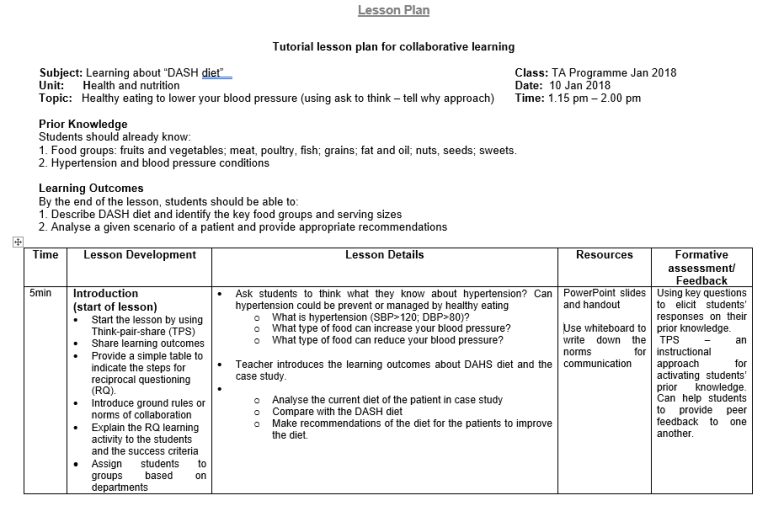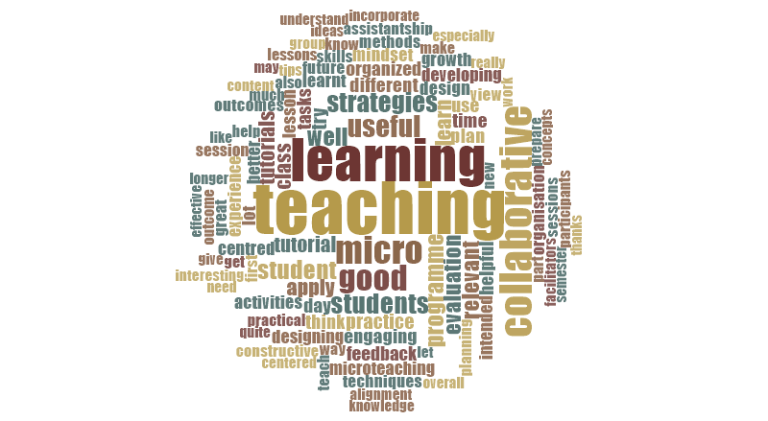Mark GAN
Centre for Development of Teaching & Learning (CDTL)
Mark shares some ways in which student learning evidence can be used to evaluate one’s course learning outcomes, and how it can enhance teaching practice.

Gan, M. J. S. (2022, September 29). Using student learning evidence - an example from the Teaching Assistants Programme (TAP). Teaching Connections. https://blog.nus.edu.sg/teachingconnections/2022/09/29/using-student-learning-evidence-an-example-from-teaching-assistants-programme/
In this September issue, I share my personal experience of how I collect and analyse students’ work to evaluate their learning outcomes and at the same time, use this information to reflect and improve my own teaching practice.
As an academic developer in CDTL, I work closely with faculty members to improve the quality of teaching and learning, as well as to foster their growth as an educator and as an academic in higher education. Besides working with faculty, I also support students by conducting training for teaching assistants through the Teaching Assistants Programme (TAP). Prior to a shift to online learning for TAP, we provided face-to-face explicit instruction on how to design and implement active learning strategies and allowed participants deliberate practice in the form of micro-teaching, accompanied by peer and instructor feedback.
To help evaluate students’ learning in TAP, I designed and collected the following evidence:
Students’ Work: Draft Lesson Plan
Figure 1 shows an example of a student’s lesson plan (excerpt), which helps the student in planning, discussing and designing an active learning activity for implementation during their micro-teaching session.
In this example, the student was able to provide descriptive and sequential details of her approach to conducting a group learning activity. The analyses of student TAs’ lesson plans provided me with evidence of how they are able to apply what they have learnt and what are the areas that may need further attention.

For example, in the lesson plan, student TAs were required to indicate the prior knowledge of their own students. However oftentimes, instead of indicating clearly what students bring to the lesson (which will help make sense of the new materials to be taught), they tend to state very generic background knowledge and skills. In view of this, we decided to be more specific and explicit when we discuss the purpose of thinking about ‘prior knowledge’ in the planning stage of a lesson.
Students’ Work: Collaborative Learning Activity
I introduced this group activity – Co-designing active learning activities using Bookcreator software during TAP to allow student TAs to discuss and experience working together on a collaborative learning activity. I take this opportunity to model the teaching approach on how to implement collaborative learning in a tutorial setting. Here is an example of students’ work (see Figure 2)

Programme Evaluation Survey
The student participants provided qualitative comments on open-ended questions, such as how useful and practical are the strategies taught during TAP and how they could apply them in their own teaching practice. I read and identify common patterns in the comments, discuss with my co-teachers, and make progressive tweaks to enhance our TAP (see Figure 3).

Invitation to Share Their Experiences on Teaching Connections Blogposts
I have invited student TAs who have attended our TAP to share their actual experiences of implementing collaborative learning in their tutorial lesson. Here is an example of a wonderful write-up from one TA (SHEE Siew Ying), submitted as a blogpost in CDTL’s Teaching Connection titled ‘Power of Moments: Creating Memorable EPIC Lessons’.
Co-authoring a Paper in the Asian Journal for the Scholarship of Teaching and Learning (AJSOTL)
I was very fortunate to co-author a paper with one of my student TAs from the TAP (Sapthaswaran Veerapathiran), which serves as a source of evidence on impact of learning beyond the classroom. Here we worked together to investigate the design and use of a rubric to evaluate students’ lesson plans. The paper was published in AJSoTL, titled ‘The Development of a Scoring Rubric for Studying Graduate Teaching Assistants’ Competence in Collaborative Learning Lesson Planning and Implementation’
I hope the above examples provide you with some ideas on how you can proactively and systematically collect, analyse, and use student learning evidence to improve your own teaching practice!
 |
Mark GAN is an Associate Director of the Centre for Development of Teaching and Learning (CDTL) in NUS. He has been involved in a wide variety of higher educational initiatives and programmes to enhance professional development of staff, such as courses for developing a Teaching Portfolio and writing of teaching inquiry grants. His research interests include feedback and assessment, and the impact of academic development work on teaching and learning. Mark has a PhD in Education from the University of Auckland, supervised by Professor John Hattie. Mark can be reached at mark.gan@nus.edu.sg. |

